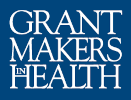Alyssa McFadden, Research and Policy Associate, Center for Health and Social Care Integration, Department of Social Work and Community Health – Rush University Medical Center
Teresa Moro, Health Services Researcher, Center for Health and Social Care Integration, Department of Social Work and Community Health – Rush University Medical Center; Assistant Professor, Department of Social Work, College of Health Sciences – Rush University Medical Center
Bonnie Ewald, Managing Director, Center for Health and Social Care Integration, Department of Social Work and Community Health – Rush University Medical Center, Chicago IL
Robyn Golden, Policy-Director, Center for Health and Social Care Integration, Department of Social Work and Community Health – Rush University Medical Center; Associate Vice President of Social Work and Community Health, Rush University Medical Center
Introduction
Historically, social determinants of health (SDOH) have not been addressed in health care visits. However, whether someone has a safe place to live or healthy food to eat directly impacts health. Other SDOH outlined by the Office of Disease Prevention and Health Promotion include economic stability, education access and quality, neighborhood and build environment, social and community context, and healthcare access and quality. It is critical that health care providers understand individuals’ experience of these domains; without this, the care provided is not patient-centered and does not fully address health and well-being.
The 2019 National Academies of Sciences, Engineering, and Medicine (NASEM) consensus report Integrating Social Care into the Delivery of Health Care: Moving Upstream to Improve the Nation’s Health addressed this issue directly. This report outlined the following key complementary activities health systems can engage in to address individuals’ health-related social needs and minimize community-level social risk factors:
- Awareness refers to activities that identify the social needs and existing resources of patients, families, and communities.
- Assistance refers to activities that link patients, families, and communities with resources.
- Adjustment refers toactivities which use social needs information to inform clinical decision making.
- Alignment refers to activities undertaken by health systems to connect with existing community resources and invest in these resources to mitigate social risk factors and improve health outcomes on a community level.
- Advocacy refers to collaboration between heath care organizations and community-based organizations to promote policies that increase the availability of resources to mitigate social risk factors in the long-term.
Ideally, when health care systems engage in all five activities, the focus of health care shifts from merely treating disease to focusing on disease prevention and meaningfully facilitating well-being for individuals and communities.
Since the NASEM report and the COVID-19 pandemic, there has been a culture shift as interdisciplinary stakeholders across the health care sector are now acutely aware of the impact of social factors. This charge has been led, in no small part, by social workers in health care and public health. From policy developments that directly invest in social care activities to training programs, measurement development, and practice-based research, significant progress is underway in expanding access to social care as part of advancing health equity.
NASEM Report Impact
Following this groundbreaking NASEM report, the national social care workforce continues to grow significantly. For example, jobs for health care social workers are expected to increase by 10 percent[AM1] over the next 10 years, with similar projections for community health workers. Addressing social needs is a complex process and interprofessional health care teams greatly benefit from incorporating social care experts, specifically social workers and community health workers.
Both professions bridge health and social care by leveraging their expertise in partnering with patients, families, and communities to reduce health and health care disparities. This collaboration optimizes cross-sector alignment and encourages support across the care continuum. Additionally, both professions bring unique expertise which enables them to best meet the needs of health systems by working together to triage patients to the appropriate team member which may keep costs of social care down. For example, community health workers are experts in the communities served with many of them living in the same communities. Social workers have extensive training in mental health care, crisis management, and navigating complex health care and community-based services.
Center for Health and Social Care Integration (CHaSCI)
The Center for Health and Social Care Integration (CHaSCI) at RUSH University Medical Center is a training, policy, and research center that promotes the importance of integrating social care into health care and supporting social care teams, specifically social workers and community health workers. The CHaSCI Care Model is a flexible care management approach that provides social care providers with a standardized protocol informed by evidence-based therapeutic techniques and interventions. Using the CHaSCI Care Model, social workers and community health workers are given an adaptable roadmap to navigate complex psychosocial, medical, and functional issues impacting health and well-being for patients, families, and communities. One primary aim of this model is to remove barriers to essential social care services. The CHaSCI Care Model has been implemented in an array of settings across the U.S. from transitional care to ambulatory and specialty care clinics. CHaSCI provides ongoing tailored training for health care systems and community-based organizations seeking to incorporate social care into current service delivery. The training is tailored to essential members of the social care workforce including social workers, community health workers, and others in both health care and community spaces.
Innovations in Social Care Integration
There remains a dearth of research on social care integration and its impact on clinical outcomes. However, two primary groups are addressing this issue. First, the Social Interventions Research and Evaluations Network (SIREN) created a social care logic model which illustrates pathways for social care activities to contribute to potential improvements in patient health. This model emphasizes the breadth of ways that providers and systems can influence patient health by adapting current care processes to better address social needs. Second, researchers at the University of North Carolina Behavioral Health Workforce Research Center are exploring social care workforce composition, need, sufficiency, and distribution to better understand service delivery. This includes projects exploring social worker and community health worker teams in health-based settings, which provides a snapshot of different aspects of this workforce.
In addition, the Centers for Medicare and Medicaid Services (CMS) has recently shifted their historical focus on medical services alone towards more inclusion of reimbursement for social care. For example, Medicare now covers biannual SDOH risk assessment and select clinic-based coordination and navigation services, and Medicare Advantage plans can cover supplemental benefits such as non-medical transportation, home modifications, and meal delivery. Some states have also begun to expand Medicaid through 1115 waivers, managed care plans, and integrated care models to address health-related social needs. States can use 1115 waivers to request federal matching funds for alternative pathways to improving health, thus incentivizing the use of these services and supports.
Arguably, improvements in infrastructure supporting social care alignment, assessment, and referrals are also evident based on the increasing uptake of health care systems and providers using Social Health Assistance Referral Platforms (SHARPs). These platforms have the potential to integrate into health system infrastructure and break down service barriers by simplifying the process of referrals to community-based services. Additional infrastructure innovations include increased community care hubs. These hubs streamline the continuity of care across participating organizations by consolidating and managing administrative tasks, coordinating multiple funding streams, providing training and development opportunities for the social care workforce, managing referrals to providers and resources, and aligning care across multiple organizations.
Barriers and Challenges
Despite being social care experts, social workers face unique challenges to providing this essential care to patients, families, and communities. Currently, there are several U.S. policies that present barriers to both administering and receiving these services. For example, many patients who would benefit from social work services lack access due to the restrictive definition of covered services under Medicare part B, which only encompasses “mental health services for diagnosing and treating a mental illness”. This definition greatly underrepresents the breadth of the crucial services social workers can and should provide based on their scope of practice. Specifically, case management, illness navigation, addressing social needs, and advanced care planning are not currently recognized by Medicare.
Additionally, under current Medicare rules, when a patient is receiving care in home health, skilled nursing facilities (SNFs), or end-stage renal disease (ESRD) facilities, social workers are generally prohibited from billing separately for their services under Medicare Part B, as these services are typically covered under bundled payments through Medicare Part A even though in practice a comprehensive social work intervention may often not be provided. These policy and reimbursement challenges create financial barriers to hiring social workers, particularly for agencies who must rely on reimbursement dollars to stay open.
Future Directions
While much progress has been made on integrating social care into health care in the U.S., there is ample opportunity for further expansion and refinement. Although greater awareness of the importance of social care is essential, health care will not be able to fully address social care needs and make meaningful impact on the health and well-being of patients, families, and communities until billing and health care infrastructure fully invest in social workers. An investment in social workers ensures that essential community networks are forged in order to remove barriers to care and to health in the long-term. While screening for social needs is essential, it is harmful to identify needs if we do not have the workforce necessary to support and address these needs.
We believe that philanthropy plays a critical role in advancing change. We are looking forward to partnering with Grantmakers In Health and engaging in the work necessary to fully integrate social care into health care. We welcome ideas and connections that might help CHaSCI build the essential infrastructure to engage in research, policy, and training for social workers and community health workers on both community and national levels.
Office of Disease Prevention and Health Promotion. “Healthy People 2030: Social Determinants of Health.” 2024.
National Academies of Sciences, Engineering, and Medicine. Integrating Social Care into the Delivery of Health Care: Moving Upstream to Improve the Nation’s Health. Washington, DC: The National Academies Press, 2019.
U.S. Bureau of Labor Statistics. “Occupational Outlook Handbook: Social Work.” 2024.
U.S. Bureau of Labor Statistics. “Occupational Outlook Handbook: Community Health Work.” 2024.
Centers for Medicare and Medicaid Services. Medicare Benefit Policy Manual. Chapter 15, Section 60. 2024.
CHaSCI: Center for Health and Social Care Integration. “Expanding access to social care.”
SIREN: Social Intervention Research & Evaluation Network. “Improving research on social and medical care integration”. 2024.
Gottlieb, Laura; Hessler, Danielle; Wing, Holly; Gonzalez-Rocha, Alejandra; Cartier, Yuri; Fichtenberg, Caroline. “Revising the Logic Model Behind Health Care’s Social Care Investments.” The Milbank Quarterly. 102, 2 (2024): 325-335.
University of North Carolina Behavioral Health Workforce Research Center. “About Us.” 2024.
Chappel, Andre; Cronin, Kelly; Kulinski, Kristie; Whitman, Amelia; DeLew, Nancy; Hacker, Karen; Bierman, Arlene S.; Meklirr, Samantha Wallack; Monarez, Susan C.; Johnson, Kate Abowd; Whelan, Ellen-Marie; Jacob, Douglas; Sommers, Benjamin D. “Improving Health And Well-Being Through Community Care Hubs.” Health Affairs Forefront. 2022.
Centers for Medicare & Medicaid Services. “Medicare Advantage Value-Based Insurance Design Model.” 2024.
Hinton, Elizabeth; Diana, Amaya. “Medicaid Authorities and Options to Address Social Determinants of Health,” KFF (blog), (2024),
Health Affairs, Improving Health And Well-Being Through Community Care Hubs, Nov 29, 2022
Medicare Learning Network. Medicare & Mental Health Coverage. Centers for Medicare & Medicare Services. (2024).

